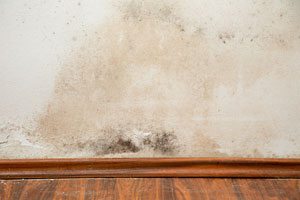Mold comes in many colors: black, white, green and orange to name a few. When we see it on bread that has been around too long, we know not to eat it and the bread gets tossed. That’s an easy decision; the mold is visible, and we know, almost intuitively, that it shouldn’t be eaten. But mold within a residence is different, mostly because it is usually invisible.
What is Mold and Where Does it Come From?
Mold is a kind of fungus. Fungus sprouts from spores that float in the air and attach to hard surfaces, usually surfaces that are damp or wet. When caught early, like when seen on a shower door or bathroom floor (that is usually called “mildew”), it can usually be scrubbed with a commercial cleanser and brush and the problem is essentially solved. But it is not always that easy. Mold is usually characterized by a damp, musty smell in a specific area of your home. You should check for damp carpet, flooring, corners, walls, cabinetry, and any other spaces that may be breeding grounds for mold. The key is to act quickly and deal with the mold problem before it gets worse.
Mold spores need a source of food in order to grow and reproduce. Organic materials such as wood, paper, and natural fibers, serve as excellent sources of food. When combined with moisture-BINGO!-mold. Mold grows where there is moisture. In a home, excessive moisture can occur when there is water damage, a broken pipe, a water leak, or flooding. By ingesting the organic material, mold grows and spreads, sometimes new mold upon old mold.
Potential Health Implications
Some molds produce compounds with toxic properties, called mycotoxins. While it is tempting to panic at the site of mold in your home, these toxins are not always produced. Whether or not the mold produces these toxins depends on what the mold is growing on and other factors such as temperature, humidity, and pH. These toxins can be present in both living and dead mold spores and materials that have been contaminated with the molds.
Another kind of toxic mold is called Stachybotrys chartarum. It has received a lot of attention by air-quality researchers. It grows on materials such as fiberboard, gypsum board, paper, dust, and lint. The danger of this mold is limited, while it is growing a layer of slime covers it and prevents spores from becoming airborne. When the mold dies, however, and dries up, the spores can become airborne and inhaled.
Health implications of mold and mildew include:
- Rash
- Wheezing
- Watery or itchy eyes
- Runny nose
- Coughing
- Other respiratory difficulties
Mold and Homeowner’s Insurance
As a very general proposition, mold isn’t covered by homeowner’s insurance policies. That is, mold, in and of itself, is not a cause of loss under a homeowner’s policy. But that does not end the analysis.
The ultimate answer to whether or not mold is covered goes to the reason for its presence. Since mold needs moisture to exist and spread, the source of the moisture is important to the insurance coverage issue. Therefore, if the cause of the moisture is an occurrence covered by a homeowner’s policy (like a burst pipe, or a fire that damaged part of a house and its extinguishment by water got other parts of it wet), it is more likely that any resulting mold would be covered. In fact, mold claims can arise under the “water damage and freezing” coverage of a homeowner’s policy.
There is usually a limit to the amount of coverage for mold “remediation.” (removal of it and repairs required by it). The coverage limit for the remediation is usually much less than the coverage for the physical damage from the water itself (which was the direct cause of the damage). Some insurers offer riders (amendments to the main policy) that provide additional amounts of mold coverage for an additional premium.
The preceding causes of mold are much different from, say, mold resulting from the negligent maintenance of a home. These might include:
- The failure to fix known leaky plumbing
- The failure to repair a roof
- The constant exposure to high humidity in it (for example, a vacation home that is kept closed-up for months at a time).
Why are they different? Because property insurance is intended to protect against fortuitous (accidental or unforeseen) events, not things like bad maintenance of which the homeowner knew or worse, caused.
But always remember that the nature and extent of insurance coverage is outlined in the insurance policy. The application of that coverage is determined by the specific facts of the occurrence.

Hey! Thanks for sharing this about the informative post. Mold is a common problem for every homeowner but many homeowner doesn’t know that mold insurance is not covered under a homeowner’s policy. Everyone needs to know about their insurance of mold damage and also if a mold damage occurs in their house, then one can also claim for getting insurance.